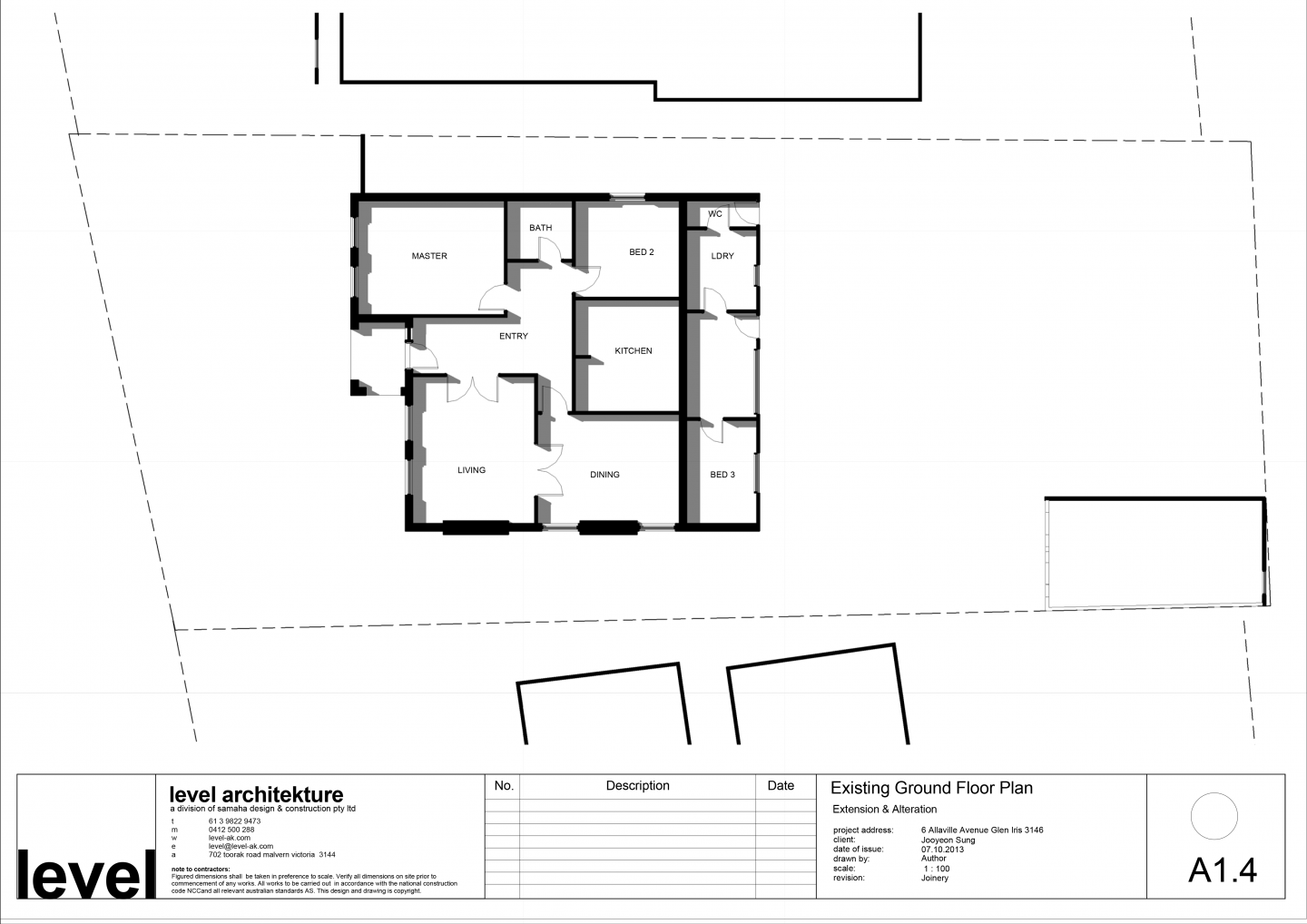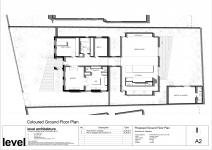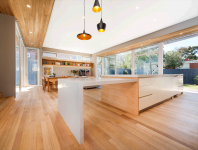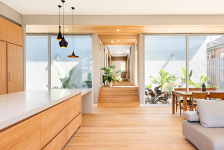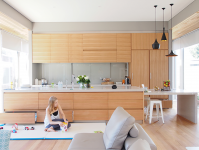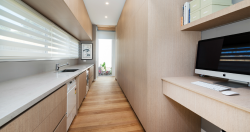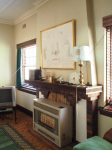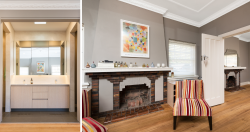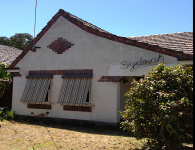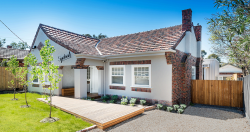Site and concept
A young couple, in 2013, expecting their first baby bought a derelict house in Glen Iris. Built in 1934, the property was part of a Heritage overlay. My client wanted to renovate the existing house but wished as well to accommodate enough room for their growing and visiting family.
The concept proposal aimed at accommodating the private spaces-bedrooms, study and amenities in the existing part while the extension focused on the public space. Tucked at the back, this transparent space capturing the North, East and West light, immersed itself in a surrounding lush garden. As the property is close to the freeway, this arrangement made it suitable to enjoy the outdoors without being affected by the noise.
2013
2014
Energy performance
The concrete slab in the new extension acts as a thermal mass. The heat is captured through the North, West and East facing windows, stored in winter and released at night. A combination of wall, pergola screening and deciduous trees full of leaves in summer block the heat so the slab remains cooler. The air moves freely without any restriction through operable windows and doors in both the new and existing parts of the house.
The whole house is insulated with roofs reaching R5. All the double glazing installed has Low-E Glass on the external layer and the gap is filled with Argon gas to improve the thermal performance. All openings have blinds to reduce further summer heat gain and winter heat loss.
In extreme cold weather conditions, hydronic gas heating provides radiant heat in winter.
A heat pump is installed for water heating which uses minimum amount of electrical power has proven to be more efficient in Melbourne than gas or electrical boosted solar hot water system.
All lights installed are LED (light emitting diode) which use about 50 to to 90 % less and last 20 times longer than conventional lights.
Water performance
A new water tank of 5000litres was installed under the grass in the backyard to collect rainwater from the existing and the new roofs that is used for flushing toilets and watering the garden.
Materials
Mixed of recycled and Tasmanian Oak timber flooring from plantation was laid in the old and new extension. All timber flooring and veneer cupboards were sealed with Wocca natural oil free from any VOC. All masonry walls were constructed from the salvaged on site bricks.
Indoor Environment quality
All windows had to be refitted to become operable and to allow cross ventilation in the existing house where the new extension enjoys high and low windows to flush any stale air inside. A Solar Powered Roof Ventilator was installed in the existing house to extract the heat from the roof in summer. All materials including paint, sealant and adhesive used had low emitting and some completely VOC free. The client suffered from asthma and the choice of natural materials proved to be crucial.
Landscape
The Client being a landscape architect designed water efficient surrounding gardens planting native trees that do not require much water, that attract local birds. Deciduous trees were planted to provide shade in summer and allow heat in winter where the evergreen on the perimeter of the property were planted to provide privacy. Decking, mulch and pervious surfaces were used in between to minimize the storm water runoff. Most plants were drought resistant. In extreme hot weather, the drip irrigation system is resourced to for watering the garden.
Waste management
Demolition materials were sorted and sent to be recycled or disposed appropriately during the first stage of the construction of the project.
Future considerations
Due to a tight budget the following will be installed in the next 2 years: Provision for 6kilowatts solar panels to generate electricity that will be installed on the sloping roof of the new extension. The windows in the existing house will be fitted with extra glazing mounted on magnetic frames as per the original specifications.
Level architekture>konstrukt
Project architect: Nadine Samaha
Graduate architect: Nick Burns
Structural engineer: Nsient
Landscape architect: Jooyeon Sung
Builder: John Samaha
